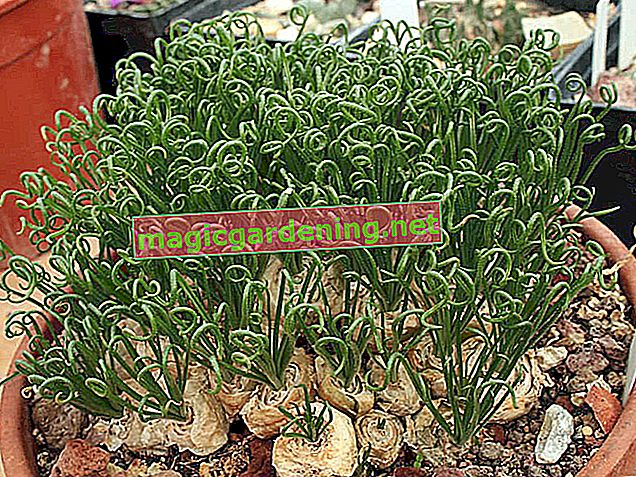
Location question
Choosing a suitable location can be described as the most important step in maintenance. Otherwise, Albuca spiralis misses the turns of the leaves, for which we appreciate them so much. In winter it is too cold for her outside, she has to be taken inside. That's a good thing because then we can admire its flowers up close.
- the growing season runs from August to May
- then the location must be warm and sunny
- in summer Albuca spiralis is allowed to stay outside
- Protect dormant onions from rain
also read
- Hibernating Albuca Spiralis - there are two options
- Albuca spiralis has brown leaves - what's wrong with it?
- Albuca spiralis - is the South African plant poisonous?
Substrate
Do not cultivate your Albuca in ordinary potting soil. Special cactus crops are available in stores that are also good for these plants. A mineral mixture with pumice stones or just pumice stones alone are also suitable as a substrate.
Fertilize
The Albuca spiralis may only be fertilized if the substrate no longer has enough nutrients to offer:
- Commercial cactus soil has plenty of nutrients
- do not fertilize additionally in the first two years
- Newly purchased plants do not need any fertilizer for at least one year
- in addition, fertilize with liquid fertilizer
- but only while the plant is sprouting and growing
to water
During the growing season, the Albuca spiralis is watered regularly. The earth must never dry out completely. But the top layer of earth may dry out in between. In the rest period, on the other hand, it is sufficient to use the watering can once a month. Even then, the amount of water should be modest.
To cut
Under this point, instructions are usually expected on how to prune a plant. But here exactly the opposite is the case. It is better not to use the scissors. Even if the leaves turn brown after flowering, you should stay on the bulb until it has dried out completely and loosens on its own. This is important so that the plant can bring the stored energy back into the bulb. So it can bloom splendidly in the following year.
Dried up flowers
As soon as the last flower has wilted, the flower stem can be cut. The thus prevented seed formation saves energy. However, if you want to harvest the seeds, you will need to let the flowers stand until the seeds are mature. However, the South African plant can also be propagated well with daughter onions.
Note:
Be careful when cultivating this plant, as some sources of information indicate it is poisonous.








